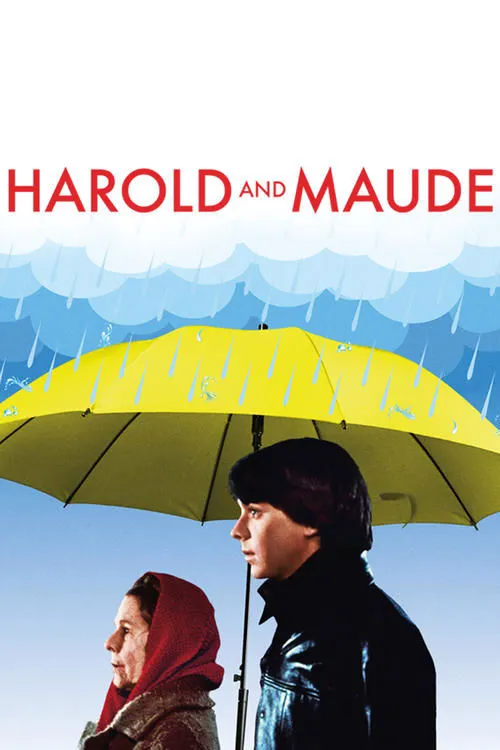Harold and Maude

Plot
Harold and Maude is a 1971 American comedy-drama film that tells the story of an unlikely friendship between Harold Chasen, a depressed and disillusioned young man, and Maude Walker, a vivacious and eccentric 80-year-old woman. The film, written and directed by Hal Ashby, stars Bud Cort as Harold and Ruth Gordon as Maude. The film begins with Harold, a morbid young man who has lost interest in the world around him. He is obsessed with death and the concept of mortality, often attending funerals and attempting to take his own life in various gruesome and theatrical ways. Harold's home life is no better, as he lives with his uptight and insensitive parents who are desperate to rid themselves of their son's "problematic behavior." As a result, Harold has become increasingly detached from the world, viewing it as a place devoid of joy or beauty. One day, while attending a funeral, Harold meets Maude, an 80-year-old woman who is also in attendance. Maude is a free spirit, a bohemian who has a zest for life and a passion for art and philosophy. Despite their vastly different age and backgrounds, the two form an unlikely bond, with Maude taking Harold under her wing and showing him the value of living life to the fullest. As the film progresses, Harold and Maude embark on a series of adventures, attending art galleries, watching old movies, and even visiting Nazi concentration camps. Through these experiences, Harold is exposed to the beauty and horror of the world, and he begins to see things in a new light. Maude, in turn, brings out the more sensitive side of Harold, encouraging him to explore his feelings and confront his fears. Despite their differences, Harold and Maude develop a deep and intense connection, which goes beyond the boundaries of friendship. As they spend more time together, they realize that their love is a source of strength and support for each other, a bond that brings them a sense of acceptance and belonging. The relationship between Harold and Maude is at the heart of the film, and it is a source of both fascination and controversy. Some viewers have interpreted their love as a form of emotional incest, with Maude serving as a mother figure to Harold, while others have seen it as a beautiful and liberating expression of love, free from the constraints of societal expectations. One of the most striking aspects of the film is its use of black humor and satire. Harold's numerous attempts on his life are often depicted in a darkly comedic light, with the audience left to wonder if he is serious or just trying to get a reaction. Similarly, Maude's enthusiasm for life and her disregard for societal norms are portrayed as a form of absurdity, a clever subversion of the conventional wisdom that age and experience are the key to happiness. The film's cinematography, courtesy of László Kovács, is also noteworthy, capturing the vibrant colors and textures of a world that is both beautiful and brutal. The production design, led by Polly Platt, is equally impressive, transforming the drab and sterile world of Harold's suburban home into a colorful and whimsical place. Throughout the film, Bud Cort delivers a compelling performance as Harold, conveying the character's complexity and emotional depth. Ruth Gordon, meanwhile, is a revelation as Maude, capturing the character's wit, warmth, and vulnerability. The chemistry between the two leads is undeniable, and their scenes together are some of the most memorable in the film. In conclusion, Harold and Maude is a film that defies easy categorization. It is a comedy, a drama, a satire, and a love story, all rolled into one. The film's exploration of themes such as mortality, love, and the value of life is both profound and provocative, leaving the audience to ponder the complexities of human experience long after the credits have rolled.
Reviews
Recommendations




